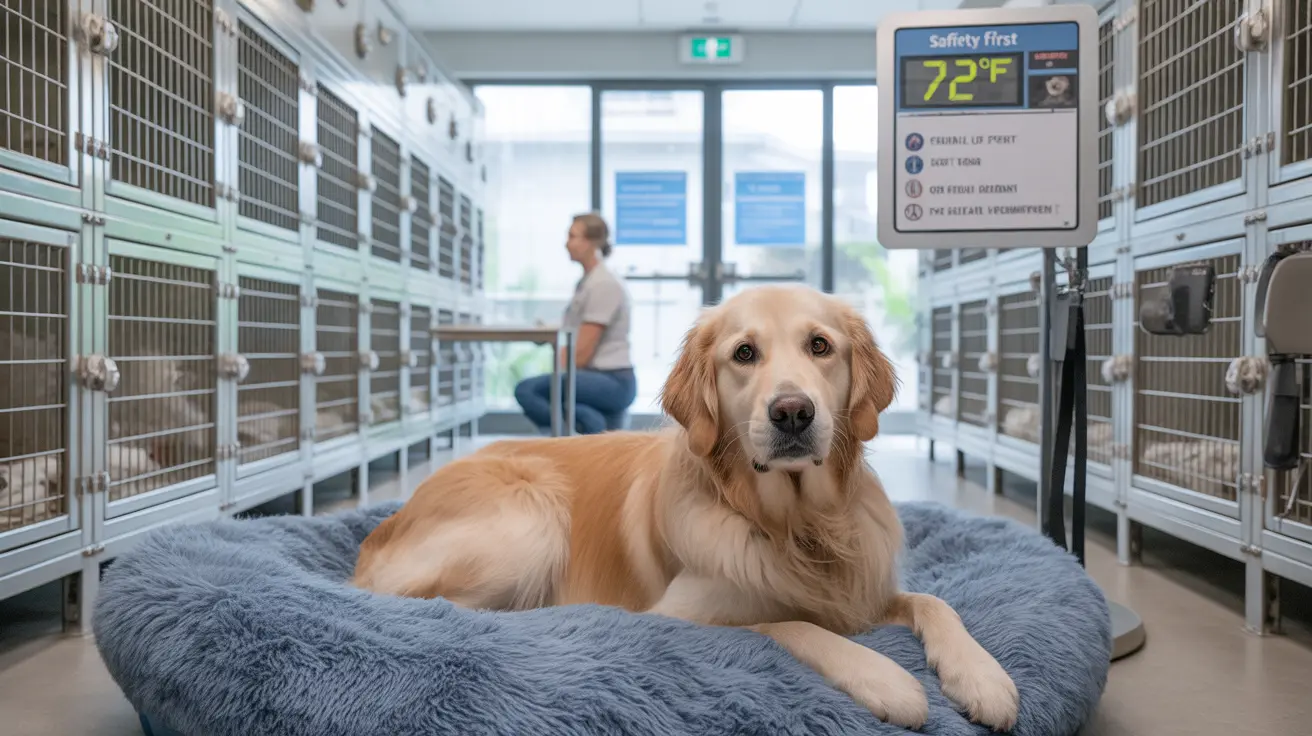How to Get a Cat's Attention with Gestures and Sounds: Science-Backed Methods for Better Communication
Understanding how to effectively communicate with your feline companion is one of the most rewarding aspects of cat ownership. While cats are often perceived as aloof or independent, recent research reveals they are highly responsive to human communication—when approached correctly. The key lies in using the right combination of gestures and sounds that speak to your cat's natural instincts and preferences.
Unlike dogs, who are typically eager to please, cats communicate on their own terms and require a more nuanced approach. Learning how to get a cat's attention with gestures and sounds not only strengthens your bond but also makes daily interactions more enjoyable and stress-free for both you and your pet. Whether you're trying to call your cat for feeding time, initiate play, or simply enjoy some quality bonding time, mastering these science-backed techniques will transform your relationship with your feline friend.
The Science Behind Feline Communication
Recent research has challenged long-held assumptions about how cats respond to human communication. While cats have traditionally been thought to rely heavily on hearing, studies now show that visual social cues like eye contact and slow blinking are particularly effective in getting their attention. House cats have adapted remarkably well to human social environments, making visual cues especially important for successful communication.
Cats process information differently than dogs, and contrary to popular myths about feline aloofness, they do care deeply about their owners—they simply express it in their own unique way. Understanding this fundamental difference is crucial for anyone looking to improve their communication with their cat. The most effective approach combines both auditory and visual elements, creating a multi-sensory experience that resonates with your cat's natural communication preferences.
The Power of Combined Gestures and Sounds
The most effective way to capture your cat's attention involves combining vocal cues with hand gestures rather than relying on either method alone. This dual approach works because it engages multiple senses simultaneously, making your communication more noticeable and meaningful to your cat. Pure gestures alone are more effective than only vocal calls, but the combination of both yields the best results.
When implementing this technique, start by getting on your cat's level—literally. Sit down to avoid appearing intimidating, then extend your hand while speaking in a calm, reassuring tone. This approach respects your cat's natural instincts while providing clear, multi-sensory communication that they can easily interpret and respond to.
Effective Vocal Techniques
Cats are particularly receptive to high-pitched, friendly tones that are similar to "baby talk." The tone of your voice matters far more than the actual words you use. Speaking calmly and reassuringly encourages interaction, as cats learn to recognize and trust the sound of their owner's voice. This preference for higher-pitched sounds has evolutionary roots—it mimics the communication patterns cats use with their kittens and signals non-threatening intentions.
Making soft kissing noises or clicking sounds can also spark interest, especially when combined with visual cues. These sounds are non-threatening and often trigger curiosity rather than fear or defensiveness.
Strategic Hand Gestures and Body Language
Your body language speaks volumes to your cat. Some cats will readily approach an outstretched hand, hoping for a chin rub or scratch behind the ears. The key is to let your cat make the first move—offer your hand and allow them to approach at their own pace. This respects their autonomy while providing a clear invitation for interaction.
Avoid staring directly at your cat, as this can be perceived as threatening. Instead, practice slow blinking, which is often called "cat kisses." This gesture shows that you mean no harm and often encourages cats to approach or respond positively to your presence.
Building Trust Through Familiar Sounds
Cats respond exceptionally well to familiar sounds linked to positive experiences, particularly those associated with feeding or play. The rustling of food bags, opening of cans, or the sound of treats being shaken can immediately capture your cat's attention because these sounds trigger powerful associations with reward and satisfaction.
Teaching your cat to associate specific words or phrases with feeding time is particularly effective. Using classical conditioning, you can train your cat to respond to cues like "dinner time!" This technique is especially useful when you can't locate your cat and need them to come to you. The key is consistency—always use the same phrase and follow through with the promised reward.
The Role of Play Sounds
Sounds associated with play and enrichment also serve as powerful attention-getters. The crinkle of catnip packages, the jingle of toy bells, or the familiar sound of a favorite toy can instantly engage your cat's hunting instincts and curiosity. These sounds work because they tap into your cat's natural predatory behaviors, making them irresistible to most felines.
For cats that aren't food-motivated, play sounds often provide the perfect alternative for capturing attention. Understanding what motivates your individual cat—whether it's food, play, or social interaction—allows you to tailor your approach for maximum effectiveness.
Environmental Factors and Individual Differences
A cat's responsiveness to gestures and sounds can vary significantly based on environmental factors and individual personality traits. Indoor cats may be more responsive to human communication attempts because they have fewer external distractions and have adapted more completely to the human household environment. Outdoor cats, on the other hand, may be more focused on environmental stimuli and less immediately responsive to human cues.
In multi-pet households, competition for attention can affect how individual cats respond to communication attempts. Some cats may become more attention-seeking in these environments, while others may become more reserved. Understanding your household dynamics helps you adjust your approach accordingly.
Personality-Based Approaches
Different cat personalities require different communication strategies. Confident, outgoing cats often respond well to direct approaches with clear gestures and sounds. More timid or anxious cats may require a gentler approach with softer sounds and less direct eye contact. Learning to read your cat's individual preferences and adjusting your communication style accordingly will yield much better results than using a one-size-fits-all approach.
Creating Daily Interactive Rituals
Establishing consistent daily rituals that combine gestures and sounds helps build trust and improves your cat's overall responsiveness. These rituals might include a special greeting when you come home, a pre-feeding routine that combines specific sounds and gestures, or a bedtime routine that signals calm, bonding time.
The key to successful rituals is consistency and positive associations. When your cat knows what to expect and associates your specific gestures and sounds with pleasant outcomes, they become more likely to respond positively to your communication attempts throughout the day.
Training for Consistent Response
Training your cat to respond consistently to combined gestures and sounds requires patience, positive reinforcement, and short, frequent sessions. Start with simple combinations—perhaps extending your hand while saying your cat's name in a friendly tone. When your cat responds by approaching or showing interest, immediately reward them with praise, treats, or gentle petting.
Keep training sessions brief to avoid overwhelming your cat, and always end on a positive note. Never use punishment or force, as this will undermine trust and make future communication attempts less effective. Instead, focus on rewarding desired behaviors and ignore unwanted responses.
Reading Your Cat's Body Language Responses
Understanding how your cat responds to your communication attempts is crucial for refining your approach. A happy, engaged cat typically displays relaxed posture, neutral or forward-facing ears, and may purr or rub against you. These are clear signs that your gestures and sounds are being well-received.
Conversely, signs of stress or irritation include tail thumping, flattened ears, growling, or hissing. If you notice these signals, it's important to give your cat space and avoid forcing interaction. Ignoring these warning signs can damage trust and make future communication attempts more difficult.
Recognizing Overstimulation
Most cats have a petting threshold—a point at which continued interaction becomes overwhelming rather than enjoyable. Learning to recognize when your cat has reached this limit is essential for maintaining positive communication. Signs of overstimulation include increased tail movement, skin rippling along the back, or sudden attempts to move away from you.
When you notice these signs, immediately stop the interaction and give your cat space. This respect for their boundaries actually strengthens your relationship and makes them more likely to engage positively with you in the future.
Troubleshooting Common Communication Mistakes
Many cat owners unknowingly make mistakes that reduce the effectiveness of their communication attempts. Common errors include being too forceful or loud, staring directly at the cat, or continuing to interact when the cat shows signs of wanting to disengage. These behaviors can create negative associations that make future communication more difficult.
Another frequent mistake is inconsistency—using different gestures or sounds for the same desired outcome confuses cats and reduces the effectiveness of your communication. Cats thrive on routine and predictability, so maintaining consistent signals is crucial for success.
Avoiding Negative Associations
Never associate your attention-getting gestures and sounds with negative experiences like veterinary visits, medication administration, or punishment. If your cat learns that your communication signals predict unpleasant outcomes, they will naturally begin to avoid or ignore your attempts to interact.
Instead, ensure that the majority of your communication attempts lead to positive outcomes like treats, play, or gentle affection. This builds positive associations that make your cat eager to respond to your gestures and sounds.
Advanced Techniques for Deeper Connection
Once you've mastered basic gesture and sound combinations, you can explore more advanced techniques for deepening your connection with your cat. These might include teaching specific tricks using marker training, developing unique "greeting" rituals that are special to your relationship, or learning to mimic some of your cat's own vocalizations.
Some cats enjoy having "conversations" with their owners, responding to human vocalizations with their own meows and chirps. Engaging in these vocal exchanges while using appropriate gestures can create incredibly rich communication experiences that strengthen your bond significantly.
Frequently Asked Questions
- What's the most effective combination of gesture and sound for getting a cat's attention? The most effective approach is extending your hand at the cat's level while speaking in a calm, high-pitched tone. This combination respects the cat's space while providing clear, non-threatening communication signals that most cats find appealing.
- Why do cats respond better to high-pitched sounds? Cats are naturally drawn to high-pitched sounds because they mimic the communication patterns cats use with their kittens. These sounds signal non-threatening intentions and often trigger nurturing or social responses in adult cats.
- How long does it take to train a cat to respond consistently to gesture and sound combinations? With consistent daily practice, most cats begin showing improved responsiveness within 1-2 weeks. However, building strong, reliable responses can take several months of patient, positive reinforcement training.
- What should I do if my cat seems to ignore all my attempts at communication? First, ensure you're not being too forceful or overwhelming. Try softer approaches, check if your cat might be stressed or unwell, and consider whether environmental factors might be affecting their responsiveness. Some cats are naturally less social and may require more patience.
- Can older cats learn to respond better to gestures and sounds? Absolutely! While it may take a bit more patience, older cats can definitely learn new communication patterns. The key is to go slowly, use high-value rewards, and be consistent with your approach.
- How do I know if my cat is overstimulated during our interactions? Watch for signs like tail thumping, skin rippling along the back, dilated pupils, flattened ears, or attempts to move away. When you see these signals, immediately give your cat space to prevent negative associations with your communication attempts.
- Are certain cat breeds more responsive to gesture and sound combinations? While individual personality matters more than breed, some breeds like Siamese, Maine Coons, and Ragdolls are generally more vocal and social, potentially making them more responsive to human communication attempts. However, any cat can learn to respond well with patience and proper technique.
Conclusion
Mastering how to get a cat's attention with gestures and sounds is both an art and a science that requires patience, consistency, and genuine respect for your feline companion's unique communication style. By combining vocal cues with appropriate hand gestures, using familiar sounds linked to positive experiences, and always respecting your cat's boundaries, you can dramatically improve your communication and strengthen your bond.
Remember that every cat is an individual with their own preferences and personality traits. What works perfectly for one cat may need adjustment for another, so stay flexible and attentive to your cat's responses. With time, patience, and consistent application of these science-backed techniques, you'll develop a rich, rewarding communication system that enhances both your lives and creates the deep, trusting relationship that makes cat ownership so extraordinarily fulfilling.






